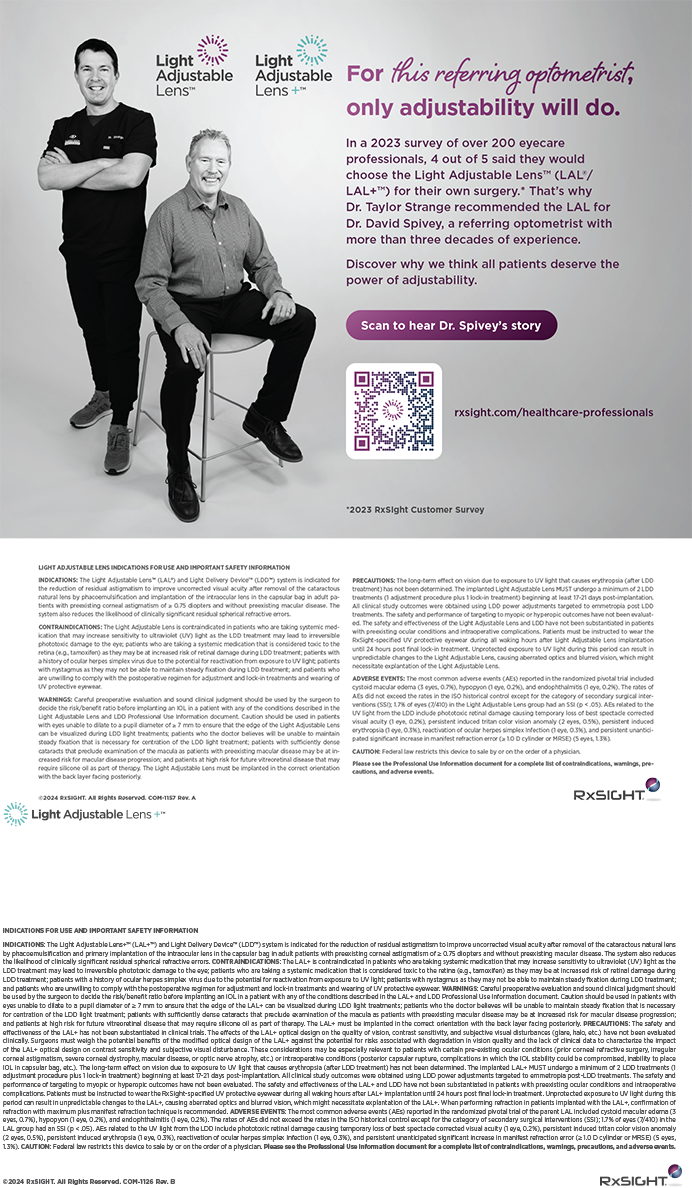Creating and advocating new techniques in medicine mandate a complicated balance between their possible benefits and potential risks. This equilibrium is certainly present when an ophthalmic surgeon tells a patient, "In my judgment, the procedure we are considering is so new that the general risks are known but the chances of a significant complication are really unknown." If some patients and surgeons are not willing to take those risks, progress will never occur. My hat is off to the prudent risk-takers, therefore, and I am proud to count myself as one of them. I have recently grown concerned, however, that some of the risks my colleagues are taking may not be prudent.
EXAMPLES
No. 1
A moderator at an ophthalmic meeting asks how many surgeons in the audience would perform LASIK on corneas thicker than 500 ?m, and about 70 hands go up. For 500 ?m, six hands remain up, and only two stay raised for 450 ?m.
In 2001, we refractive surgeons barely appreciated mild corneal pellucid marginal degeneration and the post-LASIK ectasia that usually ensued. In 2006, however, the message about the increased chances of corneal ectasia caused by LASIK on a cornea measuring less than 500 ?m preoperatively had been disseminated; although there is much we do not know about predicting ectasia after LASIK, we are accumulating a great deal of clinical data. It is telling that 62 of 70 surgeons in the previous example declined to perform LASIK on such a case. I am not denying that the remaining two surgeons have a right to perform LASIK if they think the procedure is in the best interest of their patients. In my opinion, however, their understanding and judgment are in question with respect to current knowledge about the indications for and potential complications of LASIK surgery.
No. 2
A refractive surgeon is presented with the case of a patient who underwent an eight-cut RK and paired astigmatic keratotomy about 10 years ago. The patient is experiencing a refractive variation from approximately 1.00 D in the morning to 3.00 D in the afternoon. He has a BCVA of 20/20 OU. (I readily admit that this history seems unusual, because overcorrected RK patients are more hyperopic in the morning. Please, however, accept the history for the purposes of this example.)
The surgeon recommends LASIK as a means to stabilize the refraction. He accounts for the refractive variation as accommodative fatigue without any corneal component.
I could not fault the logic of performing LASIK if the cornea were stable, but I have neither heard of nor encountered any patients with 2.00 D of accommodative fatigue. Given the history, I believe that it would be prudent and far more reasonable to consider the cornea unstable and to avoid a corneal weakening procedure such as LASIK. The chances of post-LASIK ectasia in such a case would be beyond an acceptable limit.
LASIK IS NOT A CURE-ALL
My point is that no single refractive procedure is the best alternative for all situations. LASIK is an excellent procedure for correcting refractive error, but rarely, if ever, is it the initial procedure of choice for a cornea that has a structural problem. Weakening an already weak cornea results in corneal ectasia much too often. In my opinion, some surgeons seem to believe in performing LASIK in every situation.
During the past several years, multiple well-publicized lawsuits concerning LASIK have involved potential multimillion-dollar verdicts. Some have been won. Others have been lost. This process is not about fairness; it is reality. If a surgeon keeps poor records, does not examine a patient before surgery, or performs LASIK on thin or unstable corneas, is it surprising if the number of poor results increases along with the number of successful lawsuits for medical negligence? Patients' disappointment and complications are inherent to refractive procedures, as they are to any form of surgery. We as refractive surgeons accept these challenges. No choice is perfect, and ophthalmologists can disagree on treatment options. Prudent judgment based upon our ever-increasing base of knowledge, however, is essential in refractive surgery.
Defending a lawsuit for medical negligence that deals with an unexpected complication despite the surgeon's best efforts is difficult, and I would estimate that a successful defense is mounted 80 to 90 of the time, based on information I have obtained informally. This percentage could be increased if everyone performing refractive surgery learned from the experience of others, considered all of the alternatives for treatment, and exercised prudent judgment in order to maximize the benefit/risk ratio.
Lee T. Nordan, MD, is a technology consultant for Vision Membrane Technologies, Inc., in San Diego. Dr. Nordan may be reached at (858) 487-9600; laserltn@aol.com.


